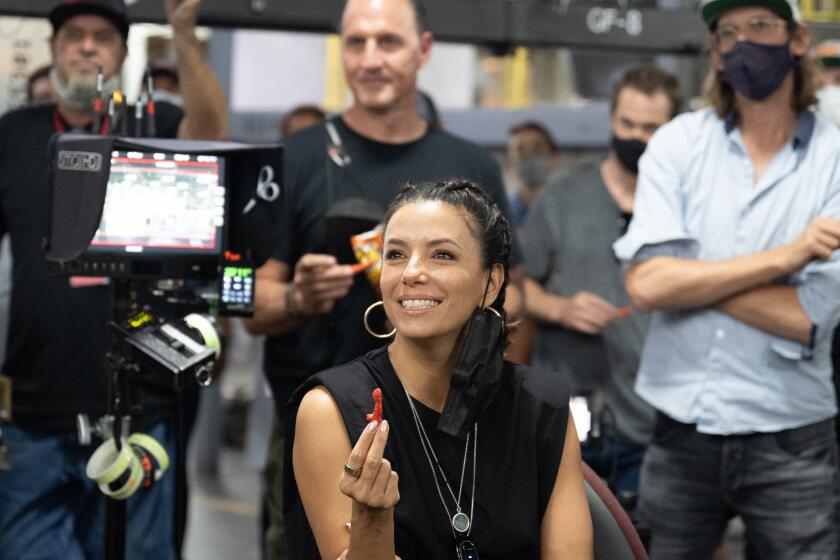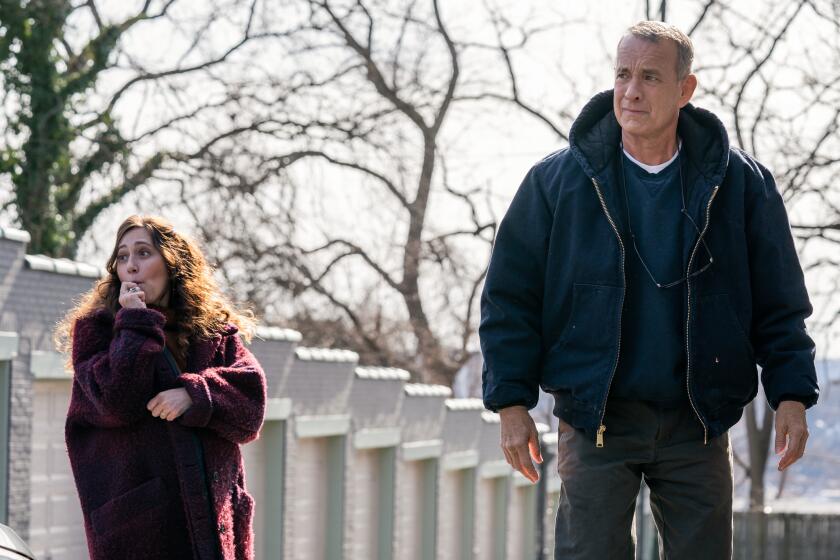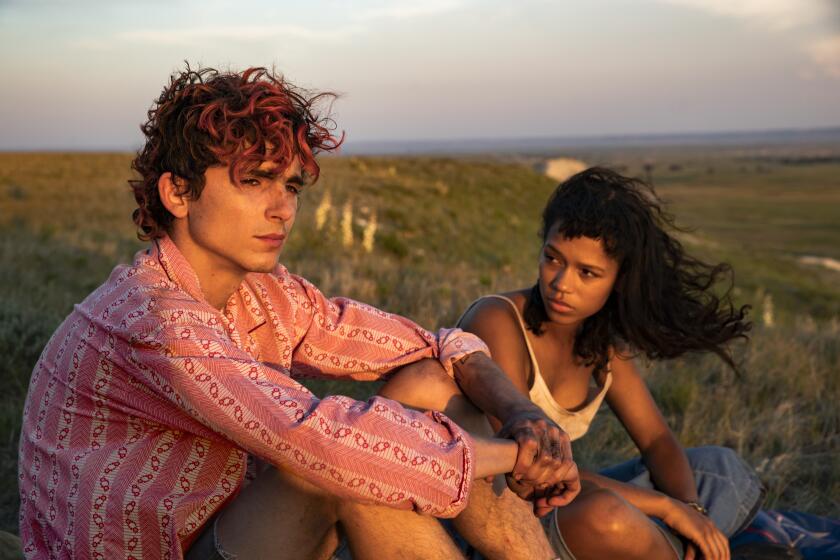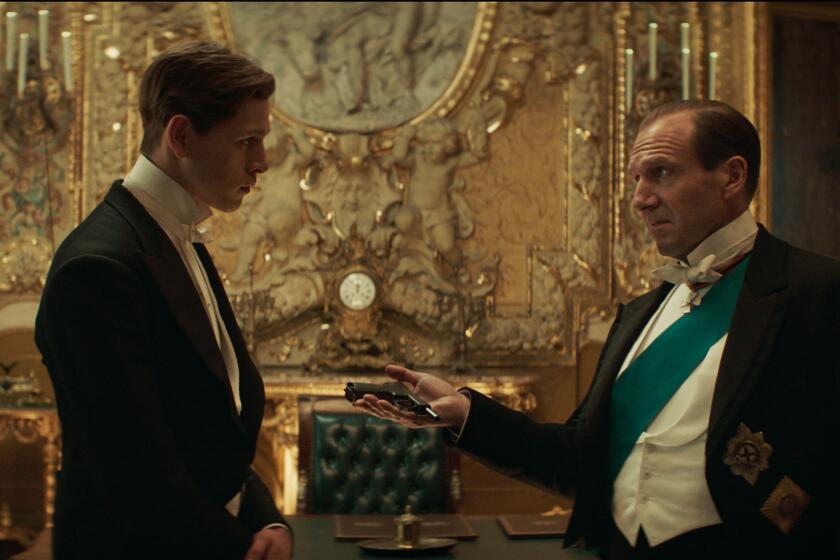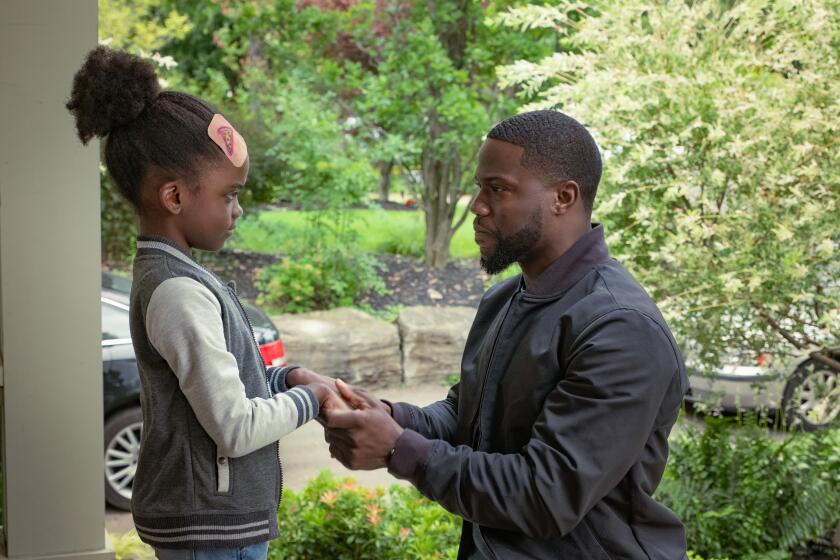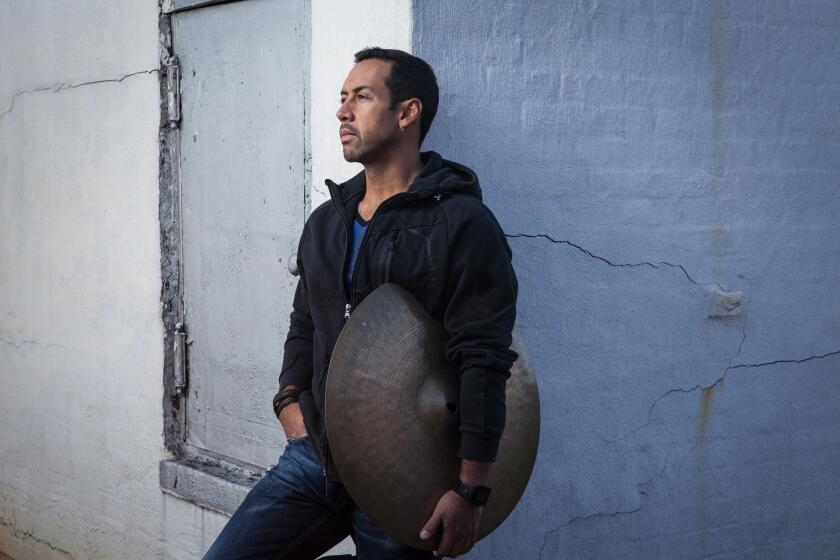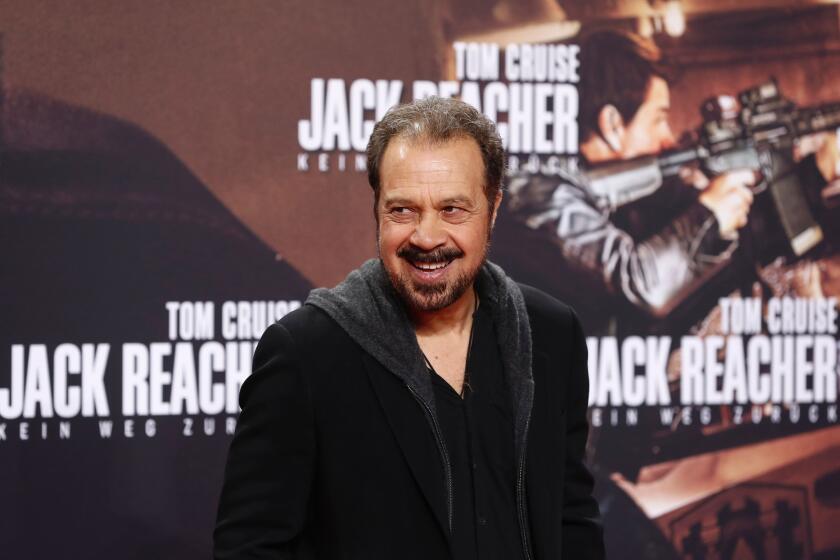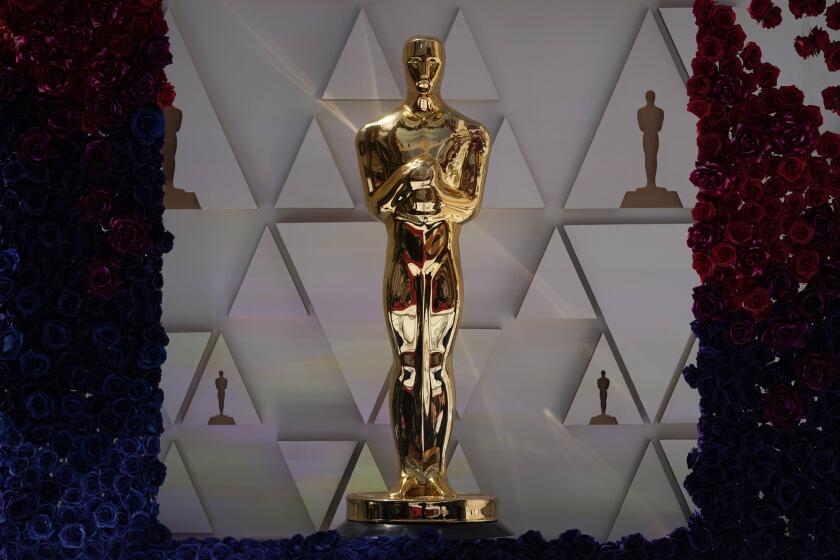How Edgar Wright’s ‘Soho’ was inspired by Quentin Tarantino’s ‘Hollywood’

A movie with “night” right there in the title did indeed require weeks of night shoots.
”Last Night in Soho,” the new film from director Edgar Wright, co-written with Krysty Wilson-Cairns, is a horror-thriller of kaleidoscopic colors and emotions. It has the signature lightness of touch but an altogether darker, more intense tone compared with previous Wright films such as “Baby Driver,” “The World’s End” or “Scott Pilgrim vs. the World.”
“Last Night in Soho” premieres Saturday at the Venice Film Festival before moving on to the Toronto International Film Festival and opening in theaters Oct. 29. Ahead of the Venice premiere, Wright posted a request to social media that festival audiences not reveal any of the film’s secrets.
In the film, a young woman named Eloise (Thomasin McKenzie) moves from her quiet country life to contemporary London to study fashion. Overwhelmed by the city, she retreats to a nighttime dreamworld where she follows Sandy (Anya Taylor-Joy), an aspiring singer in mid-’60s London, a place that seems glittering and glamorous. Eloise slowly begins to lose her grasp on reality, between her waking life and her dreams. The cast also features such icons of ‘60s British cinema as Diana Rigg, Rita Tushingham and Terence Stamp.
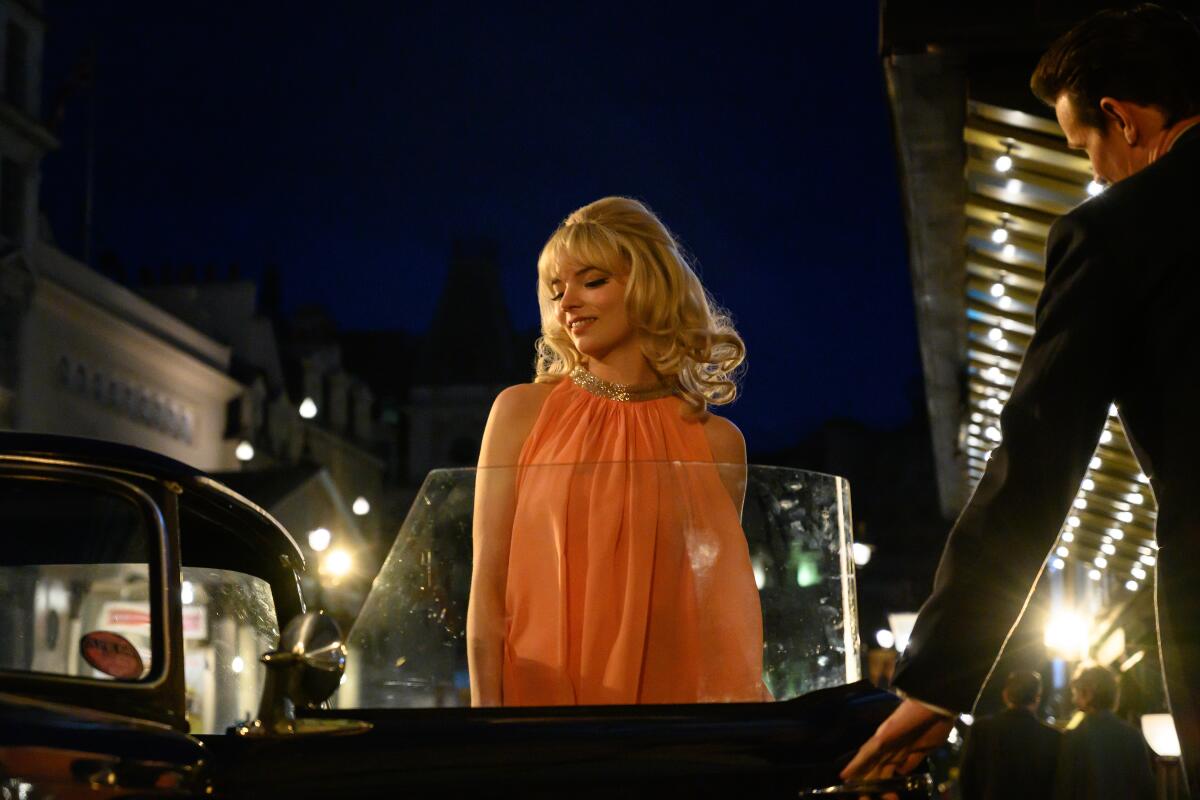
The moment when Eloise first finds herself stepping back in time is one of the film’s most overwhelming, and visually dazzling, as she’s transported from her bedroom onto the streets of ‘60s Soho at night — with its gleaming neon signs and brightly lighted marquees. As Eloise walks awestruck through busy nighttime traffic, McKenzie was actually walking among moving vehicles that required exacting choreography.
“I remember we rehearsed in an airfield or something, which was so not as interesting or colorful looking as the actual thing was,” said McKenzie in a recent interview from her native New Zealand. “So when I was rehearsing it, I didn’t quite understand how grand it was going to be.
“And then I showed up on the day and I was a little bit out of it because it’d been like three weeks of night shoots and an intense shoot. So I was kind of like, ‘What is going on?’” said McKenzie. “And then [it was] only afterwards that I realized how intense it actually was, all those cars and buses and things — and I’m a little person walking through the street amongst it all. The set design, and to be able to even be filming [in the real place], that location was pretty insane as well. It was a huge, huge achievement to have been there in the first place.”
“I’m immensely proud, and perhaps even surprised, at what we were able to pull off practically and in camera,” Wright said via email, spotlighting the work of his crew, including location manager Camilla Stephenson, the assistant director department led by Richard Graysmark, and line producer James Biddle.
“The key exterior sequences were actually shot in Central London or Soho itself and required dressing entire streets with period frontage, extras, cars etc. There’s some equally nifty VFX work by Double Negative in the shots too, such as a digital 60’s Piccadilly Circus in the distance, but most of what you see right in front of you is all real. The truth is, and the film is partly about exactly this, that Old Soho is still lurking right there. The ground floor businesses may change, but the centuries old buildings remain, as do their secrets.”
Working with a creative team that included cinematographer Chung-hoon Chung, production designer Marcus Rowland and costume designer Odile Dicks-Mireaux, Wright provided cast and crew with lists of movies for reference from the period, some showing the actual bustle of Soho nightlife during the era.
He also worked with editor Paul Machliss to cut together a special reel of clips from other movies for the crew. And, for those curious before or after they see “Soho,” Wright has programmed a series of nighttime London films for the British Film Institute that will play from October to November.
Dicks-Mireaux mentioned one additional film they saw while shooting was underway that became an extra source of inspiration — Quentin Tarantino’s “Once Upon a Time… in Hollywood.” The eventual best picture Oscar nominee was actually in production while Wright was developing and writing “Soho,” and features several scenes re-creating late-’60s Hollywood Boulevard.
“Everyone was a bit envious of that,” Dicks-Mireaux. “And so the challenge was on. And I think we pulled it off.”
For Wright, the ambitions of his fellow filmmaker were infectious. “Seeing the miracles QT and his team had done with four city blocks in the busiest street in Hollywood definitely gave me inspiration that we could achieve a lot of our scenes in camera. I’m looking forward to showing him the movie. He convinced me it was possible!”
Get U-T Arts & Culture on Thursdays
A San Diego insider’s look at what talented artists are bringing to the stage, screen, galleries and more.
You may occasionally receive promotional content from the San Diego Union-Tribune.


